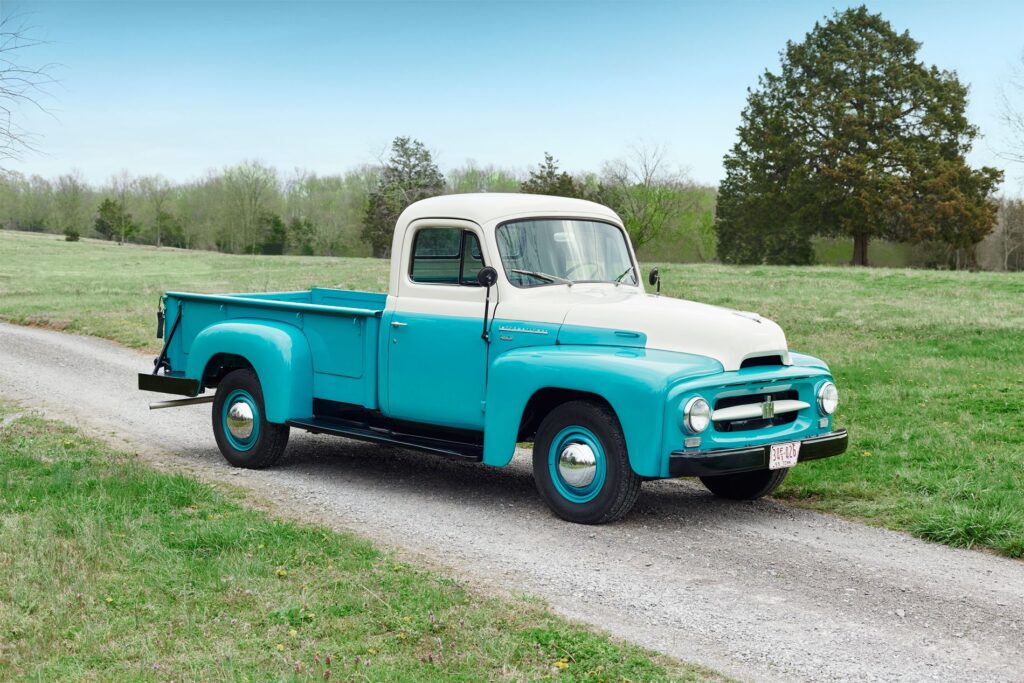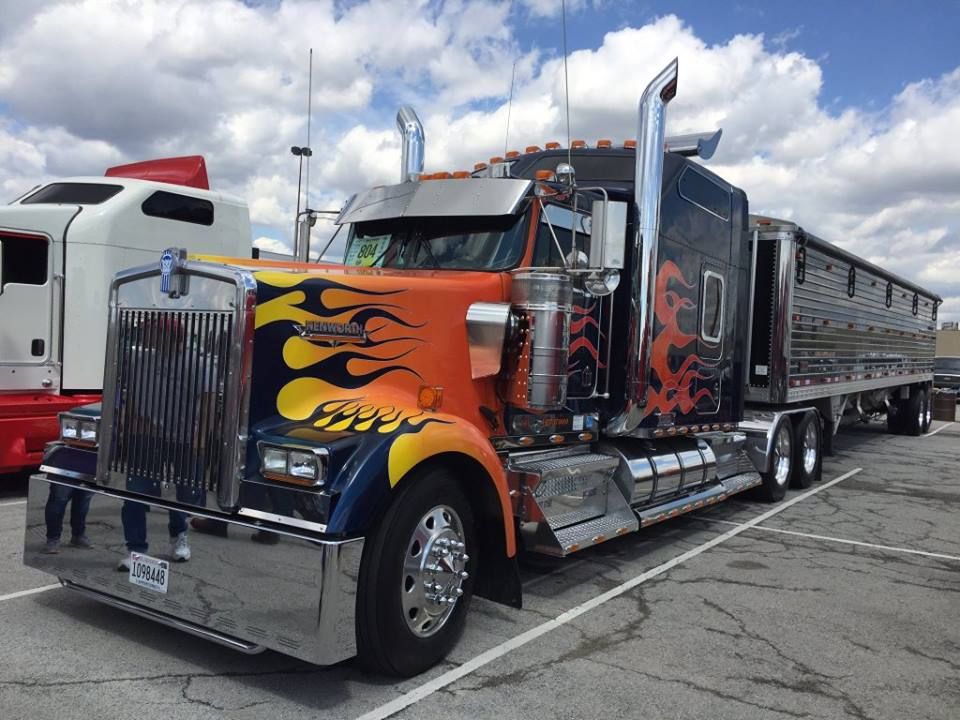The American truck has a storied history that has seen it evolve from humble beginnings to the powerhouse vehicles we know today. This comprehensive history delves into the various eras, innovations, and milestones that have shaped American trucks into the formidable machines they are today.
If you wish to learn complete technical details about American trucks and how to operate and repair them, you can always enroll in online courses for that.
The Era of Innovation (Early 20th Century)

The early 20th century marked a pivotal era for American trucks, characterized by groundbreaking innovations that laid the foundation for their future evolution. During this period, several automakers recognized the need for specialized vehicles to transport goods, and the race was on to create the perfect truck.
In 1913, the Ford Model T chassis was adapted for commercial use, sparking a revolution in truck manufacturing. If you are an American truck enthusiast, you can buy men’s t-shirts with various depictions of 20th-century old-timer trucks. It was affordable, reliable, and easy to maintain, making it a preferred choice for many businesses. The shift from horse-drawn carriages to these early trucks revolutionized transportation.
Another significant milestone was the introduction of the first diesel-powered truck in 1930, the Cummins Model H. This innovation not only improved fuel efficiency but also marked the beginning of a new era in truck power. Manufacturers quickly realized the potential of diesel engines, and the trend continued to grow.
With such rapid advancements, the early 20th century became a crucial period in the evolution of American trucks. It set the stage for the development of more powerful and versatile vehicles that would become essential for various industries. If you want to wash your old truck you can use pressure washing in St. Augustine.
The Trucking Revolution (1950s-1960s)
The 1950s and 1960s were a time of dramatic change and growth in the American trucking industry. This era is often referred to as the “Trucking Revolution” due to the major shifts in truck design, usage, and infrastructure. If you are frequently feeling dizzy and experience blurry vision while driving your American truck, you should not ignore these symptoms and should immediately seek the best mobile IV therapy at the nearest clinic.
One of the most iconic trucks from this period was the Chevrolet Task Force, introduced in 1955. It featured a sleek, modern design that emphasized style and functionality. The Task Force series was popular among businesses and consumers alike, setting a standard for aesthetics in the industry.
In the late 1950s, the U.S. government launched the Interstate Highway System, which connected the nation with a vast network of high-speed roads. This development drastically transformed trucking, as it allowed for faster and more efficient long-haul transportation. Trucking companies and manufacturers adapted to this new landscape, focusing on building trucks that could handle the demands of interstate travel. If you need to fix a wheel on your old truck you can take it to Toronto wheel alignment.
Additionally, this era witnessed a surge in customizations, with various manufacturers offering a wide range of options for customers to tailor their trucks to specific needs. These developments not only improved the practicality of American trucks but also added an element of personalization that truck enthusiasts continue to appreciate today. With the change of trucks, the drivers also changed, and they started wearing increasingly popular trucker hats.
The Modern Era (21st Century)

The 21st century has brought unprecedented advancements to American trucks, pushing the boundaries of technology, efficiency, and sustainability. As we look at the modern era, it’s clear that the evolution of American trucks continues to shape the future of transportation.
One of the most significant innovations in recent years has been the introduction of electric trucks. Companies like Tesla, Rivian, and others have made bold strides in the electric truck market, promising a more sustainable future for the industry. Electric trucks offer reduced emissions and lower operating costs, marking a substantial shift from traditional combustion engines. A successful breast surgeon in San Antonio claims he really enjoys driving his Tesla truck to work and back home.
Moreover, automation and connectivity have played a pivotal role in modern American trucks. Advanced driver assistance systems (ADAS) and autonomous driving features are becoming increasingly common, improving safety and efficiency on the road. These technological marvels have not only transformed how trucks are driven but also opened up opportunities for remote monitoring and predictive maintenance.
The modern era has also seen an increased emphasis on fuel efficiency and environmental sustainability. Aerodynamic designs, lightweight materials, and improved engine technologies have all contributed to reduced fuel consumption and emissions. Truck manufacturers are aligning themselves with the global push for greener transportation solutions.
Technological Advancements and Their Impact
The 21st century has witnessed a rapid integration of cutting-edge technology into American trucks, transforming them into high-tech marvels on wheels. Some of the most remarkable technological advancements include:
- Telematics and Connectivity: American trucks are now equipped with advanced telematics systems that enable real-time tracking and data collection. These systems provide valuable insights into vehicle performance, driver behavior, and maintenance needs. Fleet managers can make data-driven decisions to improve efficiency and safety.
- Advanced Safety Features: The integration of sophisticated safety features like adaptive cruise control, lane-keeping assist, and collision avoidance systems has significantly reduced accidents on the road. These technologies not only protect truck drivers but also enhance road safety for everyone.
- Efficient Powertrains: Truck manufacturers are constantly working to improve the efficiency of powertrains. The use of turbocharged engines, hybrid systems, and advanced transmissions contributes to better fuel economy and lower emissions. Many trucks now incorporate start-stop systems to reduce idling and save fuel.
- Enhanced Comfort and Convenience: Truck cabins have evolved to offer a more comfortable and convenient workspace for drivers. There’s also plenty of space, so that you can bring with you whatever you need even a make-up bag with necessities like ys park combs. Ergonomically designed seats, advanced infotainment systems, and climate control features ensure that long-haul drivers can stay productive and comfortable during their journeys.
- Sustainability Initiatives: In response to environmental concerns, American truck manufacturers are investing in sustainable practices. They are also used for transporting rain catcher and collection barrels. The use of alternative fuels such as natural gas and biofuels is becoming more common. Additionally, the development of hydrogen fuel cell trucks holds the promise of further reducing carbon emissions.
Impact on Industry and Commerce
American trucks play a vital role in the country’s economy. Their evolution has had a profound impact on various industries and commerce, affecting the movement of goods and the way businesses operate:
- Global Supply Chain: American trucks are an integral part of the global supply chain. The efficiency and reliability of these vehicles are essential for transporting goods from manufacturing centers to distribution points and consumers. Large companies such as those manufacturing ammunition must often rely on special trucks and their efficiency in transporting their ammunition manufacturing equipment and raw materials for production. The evolution of trucks ensures that goods can be moved quickly and cost-effectively, facilitating international trade.
- Agriculture and Farming: The agriculture industry heavily relies on American trucks for the transportation of crops, livestock, and agricultural equipment. The evolution of trucks has not only made farming more efficient but has also extended the reach of farmers, allowing them to access wider markets.
- E-commerce and Last-Mile Delivery: With the rise of e-commerce, the demand for last-mile delivery has skyrocketed. American trucks have adapted to this trend, with innovations such as electric delivery trucks that are quieter, more eco-friendly, and ideal for urban areas. They ensure that packages reach consumers quickly and reliably.
- Construction and Infrastructure: The construction industry depends on trucks to transport heavy machinery, building materials, and construction equipment to job sites. Modern trucks offer the power and versatility required for these tasks while meeting stringent emissions regulations.
- Logistics and Freight Transportation: Logistics companies and freight transporters benefit from the evolution of American trucks. Improved fuel efficiency, tracking systems, and safety features allow them to optimize routes, reduce costs, and deliver goods more securely and punctually.
Cultural Significance and Iconic Models

American trucks have cemented their place in popular culture, and some models have achieved iconic status. These trucks are more than just vehicles; they represent a lifestyle, a symbol of rugged individualism, and a connection to the great outdoors. These are very popular among performers like corporate event entertainer in Orange County, because they are very practical and with lots of usable space. Here are a few iconic American truck models:
- Ford F-Series: The Ford F-Series has been a staple in American truck history for decades. Known for its reliability and versatility, it has been a top-selling model for years, consistently setting new standards for performance and innovation.
- Chevrolet Silverado: The Chevrolet Silverado is another legendary model that has captured the hearts of truck enthusiasts. Its bold design, powerful engines, and advanced technology have made it a favorite among consumers.
- Dodge Ram: The Dodge Ram, now known as the Ram Truck, boasts a reputation for strength and durability. It has been a symbol of rugged American craftsmanship and is often associated with hardworking individuals who demand a tough truck for their daily tasks.
- GMC Sierra: The GMC Sierra offers a more premium take on the American truck, combining power with refined features. It’s a favorite among those who seek both capability and luxury in their vehicles.
- Jeep Gladiator: The Jeep Gladiator has gained attention for its unique blend of a pickup truck and an off-road capable SUV. It appeals to adventure seekers and outdoor enthusiasts who want to explore rugged terrains while still having the utility of a truck bed.
These iconic models continue to evolve, adapting to the changing needs and preferences of consumers while retaining the core qualities that have made them legendary. All of these trucks can be found as miniature RC versions, and for enthusiasts, there are several variants of them with different RC bodies.
Future Trends and Challenges
As we look ahead, the evolution of American trucks shows no signs of slowing down. Several key trends and challenges will shape the industry in the coming years:
- Electric Revolution: The transition to electric trucks is expected to gain momentum, driven by environmental concerns and government regulations. Electric trucks offer zero-emission solutions, reduced operating costs, and a quieter ride. The challenge lies in developing infrastructure to support widespread adoption.
- Autonomous Driving: Autonomous trucks, equipped with advanced sensors and AI technology, are on the horizon. They promise to improve safety, reduce labor costs, and increase efficiency. However, regulatory hurdles and public acceptance remain significant challenges.
- Supply Chain Resilience: Recent disruptions in global supply chains have underscored the need for more resilient transportation systems. American trucks will play a crucial role in developing robust supply chain networks that can withstand unexpected shocks.
- Sustainability: The push for sustainability will continue to influence truck design and operations. Manufacturers will focus on reducing emissions, conserving resources, and promoting eco-friendly practices.
- Driver Shortage: The trucking industry is grappling with a shortage of qualified drivers. Solutions such as improved driver training, better working conditions, and automation will be explored to address this issue.
In conclusion, the evolution of American trucks is an ongoing saga of progress, innovation, and adaptation to the ever-changing landscape of transportation. If you’re checking out how to insure your new car or truck, do not forget to check with healthcare services in Dallas Metroplex on how to get medically insured yourself! These vehicles, deeply ingrained in American culture and industry fabric, continue to shape how we move goods, conduct business, and experience the open road. With each passing year, American trucks break new ground, proving that their journey is far from over, and the road ahead is filled with exciting possibilities.

